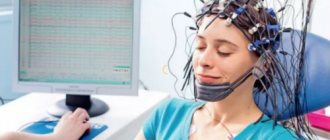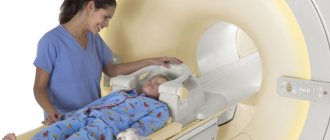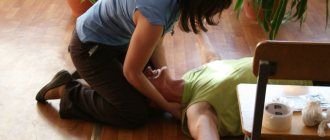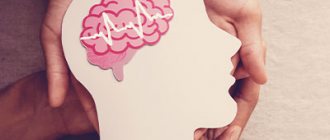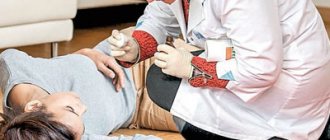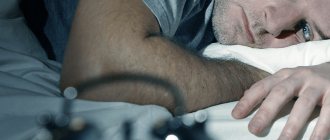G 40.9 – Epilepsy, unspecified – example of writing a call card
Patient, 34 years old
Reason for calling – Unconscious (reason unknown)
Complaints, medical history
At the time of the examination he makes no complaints and does not remember what happened. Located in a public place (shop), sitting on the floor.
According to others, about 10 minutes ago there was an attack of tonic-clonic seizures with loss of consciousness and foam at the mouth. No treatment was undertaken. This is not the first time such conditions have occurred; I previously came to 03 with epileptic seizures.
Anamnesis of life
Epilepsy, is on an outpatient basis. Regularly takes anticonvulsants.
Comfortable blood pressure – does not explain.
Physical examination
Condition: moderate;
Consciousness – stunned, Glasgow scale – 13 points, behavior – inhibited;
Pupils – normal, D = S, reaction to light – lively, no gaze paresis, horizontal nystagmus;
Skin – physiological color, dry, clean;
Heart sounds are clear, rhythmic, no murmurs. The pulse in the peripheral arteries is of satisfactory quality, rhythmic;
Nervous system – no meningeal symptoms, increased muscle tone D = S, no focal neurological symptoms;
The pharynx is calm, the tonsils are normal;
Excursion of the chest - normal, type of breathing - normal, percussion - pulmonary sound, auscultation - vesicular breathing, no shortness of breath;
There is no peripheral edema;
The tongue is clean and moist. The abdomen is soft, painless, participates in the act of breathing, there are no symptoms of peritoneal irritation, the liver is not enlarged, stool is formed, 1 time per day;
Urine output is normal, SSPO is negative.
Main pathology
Consciousness is depressed to the point of stupor, inhibited, inadequate, disoriented in space and time. There are bite marks on the tongue. Traces of involuntary urination. Gradual restoration of consciousness during the examination. No signs of head trauma were found.
| time | 17-30 | 17-50 | 18-10 | Etc. peace |
| NPV | 16 | 16 | 16 | 16 |
| Pulse | 86 | 84 | 76 | 72 |
| Heart rate | 86 | 84 | 76 | 72 |
| HELL | 150/90 | 130/80 | 130/80 | 130/80 |
| Pace. ºС | 36,6 | |||
| SpO2 | 97 | 97 | 97 | 97 |
Glucometry – 7.5 mmol/l
Electrocardiography
17-35 – Sinus rhythm 86 per minute. There are no signs of acute coronary pathology. There is no ECG archive.
Diagnosis by the EMS team
Epilepsy, unknown origin, condition after an attack.
Therapeutic measures
- 17-39 – Sol. MgSO4 25% – 10 ml i.v.
- hospitalization in the neurological department of the City Hospital.
Treatment result
Improvement. Complete restoration of consciousness. During transportation, the convulsive syndrome did not recur.
Analysis of a clinical case of a patient with epilepsy
The very name of epilepsy (from the Greek epilambanein - “to suddenly fall, to be suddenly overcome”) emphasizes the characteristic manifestations of the disease. Epilepsy was identified as a special disease by Hippocrates, who described periodically recurring seizures (convulsions) [1, 3, 5].
Egyptian references to “moon sickness” (morbus iunaticus) have been preserved. The Arabs knew how to treat the “convulsive disease” that overtook people on the new moon. The Romans interrupted the meetings of the comitia if any of those present had an epileptic fit (m. coraitialis, m. caducus Plenia), the cases being dealt with then were revised.
Many literary sources indicate that the painter Van Gogh suffered from epilepsy. Neurologist N.K. Bogolepov interpreted his illness as a somnambulistic form of epilepsy. The description of his outbursts of aggression and the act of cutting off his ear (according to some sources, he only cut off his lobe), and then creating a self-portrait in a bandage, undoubtedly indicate pathological behavior. William Shakespeare knew that Gaius Julius Caesar, the Roman statesman and military leader, suffered from epilepsy. In the second scene of the second act of Shakespeare's tragedy “Julius Caesar” there is the following quatrain: “Then he lost consciousness and fell. He fell in the market square. He began to foam at the mouth. He was silent" [2, 4, 7, 8].
In the biography of Napoleon, published in 1838, it is written: “From his youth he had epileptic conditions. Once in Paris, at school, for insubordination, he was punished by having to eat on his knees. Due to a severe epileptic attack that happened to him, he was released from punishment.”
According to F.M. Dostoevsky, his epilepsy began on Christmas night during exile (for connections with revolutionary circles in 1849, Dostoevsky was sentenced to death, but immediately before the execution of the sentence, the death penalty was replaced by 4 years of hard labor in Siberia). He was then about 30 years old.
Apparently, his epilepsy occurred in the form of dramatic large seizures: “His gaze froze, as if he was looking for words and had already opened his mouth. Suddenly, a drawn-out senseless scream was heard from his wide open mouth, and he fell unconscious on the floor... His body was convulsing, foam appeared at the corners of his mouth.” Probably, we are talking here about a developed primary generalized epileptic attack, which is based on a focal lesion [9–12].
A typical seizure of epilepsy begins suddenly, only for short moments some patients feel certain influences that herald an attack. Sometimes it’s like a slight whiff (aura) on the face, flashes of red light, a feeling of objects becoming larger, one’s own arms or legs lengthening, a hallucinatory perception of a whistle, drumming, a peculiar smell, a feeling of sucking in the epigastric region, numbness of the tongue, the approach of something huge , fear or ecstasy, a different perception of time. It is interesting that often all the smallest details of the aura are invariably experienced by the patient, repeating themselves with each attack. And despite the fact that the patient knows what the aura means, he does not have time to sit or lie down, but falls to the ground, often with a piercing scream or moo. The face becomes deathly pale, and consciousness leaves the patient. The mouth and face become distorted, the head turns to the side, and the patient’s entire body is stretched with a tonic spasm. Foam appears on the lips, often stained with blood from a bitten tongue or cheeks. The eyes roll back, the pupils dilate and do not react to light [2, 5, 7]. Breathing is initially delayed, then becomes hoarse and difficult. Soon the pallor of the face gives way to a blue-purple color (“black sickness”), and the pulse weakens. This period of tonic convulsions lasts from a few seconds to half a minute. Then the tension is resolved, and clonic convulsions begin to run through the body, first in individual muscle groups, and then in the torso and limbs. Soon they cover all the muscles of the body, sweat appears, and involuntary urination occurs. There is no response to external irritations, corneal reflexes are absent, knee reflexes fade away. Body temperature usually rises. The period of rhythmic movements of flexion and extension (clonic) lasts 3–4 minutes, followed by a general weakening and sometimes a series of unconscious movements and incoherent muttering. Rarely does the entire epileptic seizure last more than 5 minutes [7, 9, 12].
Let us present the clinical history of a patient diagnosed with epilepsy, which is very typical and indicative.
Patient N., born in 1990, university student.
Beginning of supervision by a neurologist at an emergency hospital: 10.10.2013.
Referred by a neurologist at a student clinic with a clinical diagnosis: “generalized epilepsy with clonic-tonic seizures, cryptogenic.”
Patient's complaints. Loss of consciousness, lasting 4 minutes, accompanied by convulsions that lasted about 4 seconds, then subsided and then appeared again 1-2 more times, and then disappeared, with eyeballs moving upward, salivation, tongue biting, post-attack drowsiness, increase in body temperature to 37 ,1°C.
History of the development of the present disease. The first attack occurred on August 26, 2013, for no apparent reason. The patient was relaxing at the seaside at that time, sunbathing on the beach. According to his mother, the attack lasted 1 minute: there was an upward movement of the eyeballs, “shaking” of the whole body, first the legs, then the arms, after a few seconds foam appeared at the mouth, and he wet himself a little. The patient himself does not remember the attack. After it, severe drowsiness was noted. There were no warning signs of an attack - there was no aura. After 2 weeks the attack repeated, was accompanied by upward movement of the eyeballs, convulsions, biting the tongue, profuse salivation against the background of loss of consciousness, lasted 3–4 minutes. The parents called an ambulance and the patient was hospitalized. He was in the hospital from October 10 to October 24, 2013, and was diagnosed with epilepsy with generalized seizures. Treatment was prescribed: oral glycine and phenytoin. On October 25, 2013, the patient was sent for additional examination to an epileptologist at the Voronezh Regional Clinical Hospital.
Patient's life story. Born from the first pregnancy. At the time of the birth of her son, the mother was 35 years old. The birth proceeded without any special features. The boy was born full-term (at 40 weeks), weight - 3800 g, height - 51 cm. Breastfeeding - up to 4 weeks. Growth and early development - without pathology. He started holding his head up at 1.5 months, sitting at 7 months, and walking at 12 months. The first teeth appeared at 7 months. At the age of 7 I went to 1st grade. Currently she is a 6th year student at a university in Voronezh. The patient is emotionally labile in character, withdrawn, periodically mating, sometimes sad, and sometimes angry, especially towards his parents. One child in the family. Living conditions are satisfactory. Meals are regular.
Past diseases: chicken pox, ARVI.
Allergy history: not burdened.
Hereditary history: not burdened.
The general condition is satisfactory, consciousness is clear. The patient's position at the time of supervision is active. Normosthenic body type. Height – 1 m 84 cm, weight – 75 kg; body temperature – 36.6°C; pulse – 85 beats/min., rhythmic, blood pressure – 110/85 mm Hg. Art.
The skin is clean, pale pink. Turgor and elasticity are preserved. Humidity is moderate. The shape of the terminal phalanges is not changed. Subcutaneous fat is moderately developed and evenly distributed throughout the body. Lymph nodes are not enlarged.
The shape and size of the skull are normal, the vascular pattern of the head is moderate. There are no softenings or deformations of the bones. There is no pain on percussion or palpation.
The respiratory system is unremarkable.
Cardiovascular system – without features.
Digestive system. Examination of the oral cavity. There is biting - a dent from the teeth in the tongue. Otherwise - no special features. The pancreas is not palpable. No pain was detected in the points and areas of the pancreas. When palpating the liver, its lower edge is located 1–2 cm below the costal arch along the right midclavicular line. Percussion: the size of the liver is normal. The spleen is not palpable.
Genitourinary system. There are no changes in the external genitalia. The kidneys are not palpable, the symptom of tapping in the lumbar region (Pasternatsky) is negative on both sides. Urination is free, painless, regular. Secondary sexual characteristics correspond to age.
Endocrine system. No pathology of the endocrine glands was detected.
Neurological examination. Consciousness is clear. The patient is oriented in space and time. Answers questions clearly and has an adequate attitude towards his illness. The intellect is well developed, consistent with age and education. At the time of examination, he did not complain of dizziness, headaches, convulsions, noise in the head, and there was no nausea or vomiting. There is no meningeal syndrome. There is no stiff neck. Hyperesthesia (increased general skin sensitivity), photophobia, hyperacusis (increased sensitivity to visual and auditory stimuli) are absent.
Cranial nerves. No pathology was identified.
Motor sphere. The muscles are evenly and well expressed. Atrophy, hypertrophy, pseudohypertrophy, fascicular and fibrillar muscle twitching were not detected. Active and passive movements in full. Muscle strength and tone are sufficient. Gait is not impaired. There are no pathological or protective reflexes. Clonus of the feet, hands, and kneecaps were not detected. Synkinesia, hyperkinesis, and tremor are absent.
Coordination of movements is not impaired. In the Romberg pose there is stability. Superficial and deep sensitivity is preserved. There are no symptoms of tension in the nerve trunks and roots. There are no meningeal symptoms. Vegetative functions are without any peculiarities.
Epileptic seizures: generalized tonic-clonic seizures.
Neuropsychic sphere. Consciousness preserved, contactable, sociable, thorough. In relation to himself, place and time, he is oriented correctly. Calm behavior. Memory and attention are not reduced. Attention test: when performing test A - 45 s, test B - 30 s, switching test - 2 minutes and 40 s. No agitation or depression was detected. Critical assessment and emotional reaction to one's illness are formal. No psychopathological phenomena (hallucinations, delusions, obsessive states) were identified. The patient easily makes contact; during supervision he behaved calmly, but a little tensely. He was willing to be tested and participated in tasks that were offered to him in the intervals between supervision hours. He performed all tasks conscientiously. In communication with the patient, there is a narrowing of the circle of interests to “Me and my illness”; the personality is characterized by self-centeredness, which leads to multiple conflicts. Thus, the formation of characterological personality traits characteristic of patients with epilepsy is observed. There is also a tendency to move away from the main topic with reasoning about random circumstances that arose along the way. Switchability is reduced, as can be seen from the results of the test for attention and switchability. The patient is annoying and monotonous, requires increased attention, and is a little sweet. A very heavy look, characteristic of patients with epilepsy, is observed (Chizh’s symptom), which reduces the ability to monitor the accuracy of the patient’s reaction to a particular word, question, or statement. The patient notes his secrecy and does not share his experiences.
There is a concreteness of thinking, a lack of a critical attitude towards oneself, personality changes, and a noticeable overestimation of one’s abilities.
Laboratory and instrumental examinations. The results of laboratory and special examination methods at the time of supervision were unremarkable.
Electroencephalography (EEG). Conclusion: when closing the eyes, hyperventilation, and 24 Hz photostimulation, generalized epileptiform activity is recorded in all brain leads. This indicates the involvement of both hemispheres of the brain in the pathological process.
Topical diagnosis and its rationale. Taking into account complaints and the results of a neurological examination, a convulsive syndrome is determined, characterized by:
- suddenness of occurrence;
- loss of consciousness;
- moving the eyeballs up and to the side;
- tension and stretching of the limbs (arms bent at the elbow joints, legs straightened);
- symmetrical twitching of the limbs.
Clinical diagnosis and its rationale. Clinical diagnosis is made based on:
- patient complaints: loss of consciousness, accompanied by upward movement of the eyeballs, salivation, increased body temperature to 37.1°C, pathological post-attack drowsiness;
- convulsive syndrome;
- clinical neurological examination: based on the EEG conclusion (when closing the eyes, hyperventilation, 24 Hz photostimulation, generalized epileptiform activity is recorded);
- instrumental research: the etiology of the disease is not determined.
Thus, the patient was given a clinical diagnosis: “generalized epilepsy with clonic-tonic seizures, cryptogenic.”
Differential diagnosis of epilepsy is presented in Table 1. Differential diagnosis of generalized epilepsy with tonic-clonic seizures is also carried out with brain tumors.
Principles of treatment
1. Permanent and long-term:
- early initiation of treatment with modern antiepileptic drugs (AEDs);
- preference for monotherapy;
- selection of AEDs in accordance with the type of epileptic seizures of a given patient;
- the use of rational combinations of AEDs when seizure control is not achieved by taking one drug;
- prescribing AEDs in doses that provide a therapeutic effect, up to the maximum tolerated;
- in case of ineffectiveness of the drug used, its evaluation;
- monitoring drug levels in the blood;
- switching to another drug if the drug used is ineffective;
- It is unacceptable to suddenly stop taking one AED or replace it with another (except for cases of individual intolerance);
- duration and continuity of therapy with gradual withdrawal of the drug when complete remission of epilepsy is achieved;
- conducting repeated courses of treatment with drugs that have a positive effect on the mechanisms of development of epilepsy;
- the issue of discontinuing AEDs is decided no earlier than 3 years after the cessation of the last seizure and in the absence of paroxysmal manifestations on the EEG.
2. Mode III (general). Diet – table No. 15.
3. Drug therapy:
- to improve cerebral circulation, metabolic and energy processes in the brain: cinnarizine (0.025) – 1 tablet 3 times a day, ginkgo biloba leaf extract – 40 mg 3 times a day, nicotinic acid – 1 ml/day IM;
- anticonvulsants: phenytoin – 1 tablet 2 times a day, valproic acid – 0.3 g 3 times a day with meals;
- means for stopping seizures: solution of mannitol 15% - 400 ml IV drip 1 time per day for 5 days, solution of furosemide 1% - 2 ml IV in a slow stream after infusion of mannitol;
- restorative therapy: thiamine solution 2.5% – 1 ml IM 1 ml every other day, alternating with pyridoxine, pyridoxine solution 5% – 1 ml IM 1 ml every other day;
- combination therapy: solution of polypeptides of the cerebral cortex of livestock - 10 mg IM, 1 bottle 1 time / day in physiological solution.
As a result of the treatment, there is an improvement in well-being.
Recommendations. As part of antiepileptic therapy: it would be correct to introduce a more modern, safe and effective drug instead of phenytoin and think about whether the combination is correct and whether the association with valproic acid is relevant.
